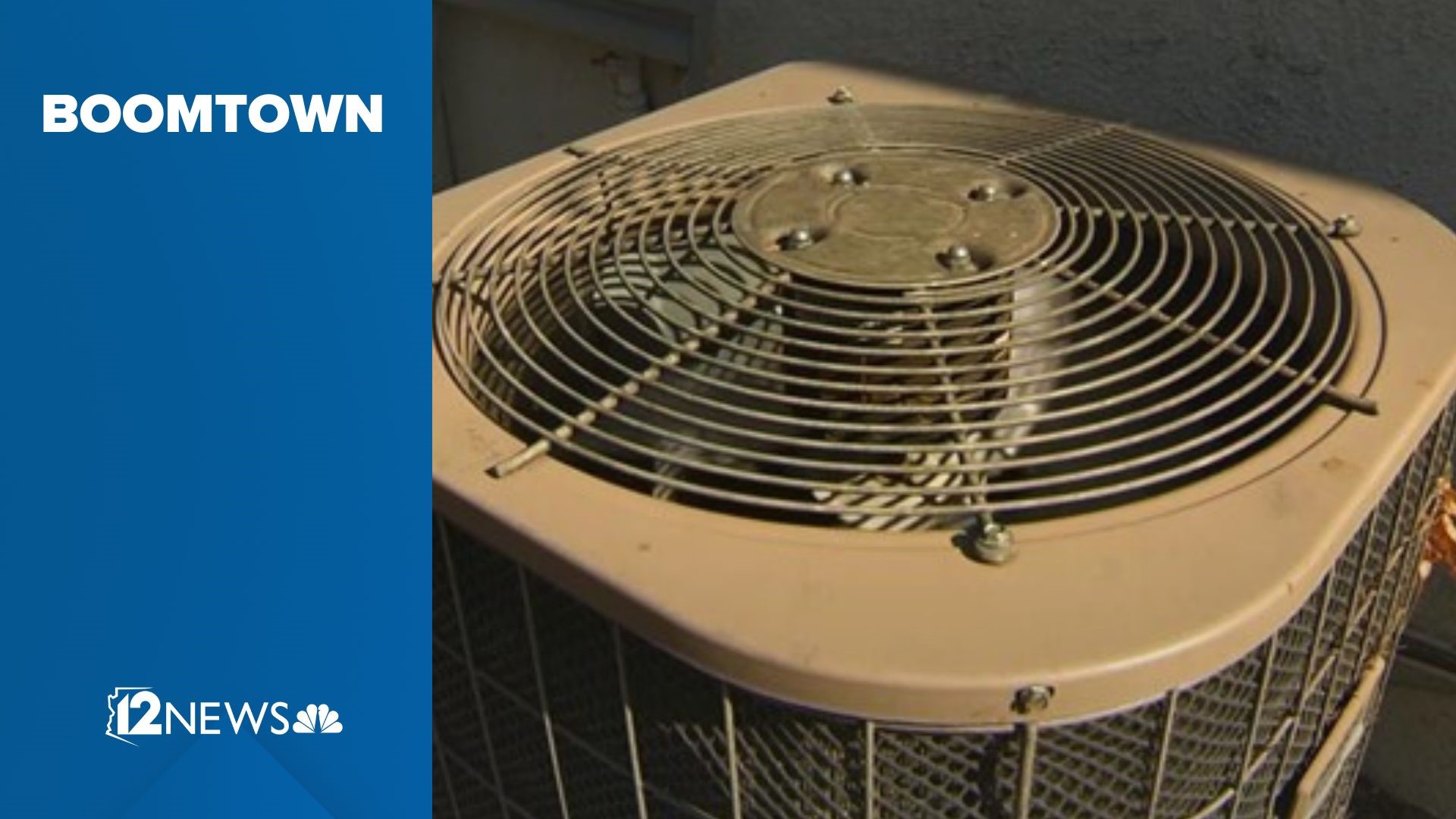ARIZONA, USA — Without air conditioning, Phoenix couldn't be the fifth most populated city in the country that it is today. Just ask state historian Marshall Trimble.
Trimble grew up in Arizona before air conditioning. "I can remember those nights sleeping outside just moving your blankets and cots outside," said Trimble.
When air conditioning was installed, it wasn't in your house.
“They didn't have air conditioning or commercial air conditioning until 1931, and that was around the Fox Theater in some of those places like that," Trimble said.
"Things changed in the 20th century drastically for Phoenix with the advent of air conditioning," Trimble said. "That's one of our major milestones. I have it about four or five in our history, starting with the discovery of gold."
It took another 20 years to start getting air conditioning in people’s houses.
"That for regular people started being developed in the 50s, and we put the first unit in Sun City air in January of 1960," said Trimble.
The Goettl company didn’t invent air conditioning, but they patented the heck out of it. They made more than 100 air conditioning units better, cheaper and cooler.
Once that happened, Arizona started booming.
In 1940 there were 65,000 people living in Phoenix. In 1950, that number shot up to 106,000, then quadrupled by 1960.
Big developments like John F Long’s Maryvale neighborhood popped up. Del Webb started building the massive Sun City retirement community.
“Del Webb, he put on air conditioning in every home,” said a Goettl representative. And those were mostly Goettl air conditioners."
Today there are a ton of air conditioning companies – and having an air conditioning unit is pretty much standard. Without it the city we know probably wouldn’t be here.
Boomtown
In our “Boomtown” series, 12News takes a look at the Valley’s explosive growth over the past few decades, the consequences that came with it and a look at what it all means for our future as more than 1.5 million people are expected to move to the valley by 2040.

